 W
WThe Siege of Acre was the first significant counterattack by Guy of Jerusalem against Saladin, leader of the Muslims in Syria and Egypt. This pivotal siege formed part of what later became known as the Third Crusade. The siege lasted from August 1189 until July 1191, in which time the city's coastal position meant the attacking Latin force were unable to fully invest the city and Saladin was unable to fully relieve it with both sides receiving supplies and resources by sea. Finally, it was a key victory for the Crusaders and a serious setback for Saladin's ambition to destroy the Crusader states.
 W
WThe Siege of Ath was a siege of the Nine Years' War. The French stockpiled 266,000 French pounds of gunpowder for the siege and used less than half of it. Consumption of other material amounted to 34,000 pounds of lead, 27,050 cannonballs, 3,400 mortar bombs, 950 grenades and 12,000 sandbags. The financial costs were 89,250 French livres. After the garrison's capitulation, 6,000 peasant workers filled up the trenches. Under the terms of surrender, the Allied garrison marched off to freedom and was not taken prisoner. Of the 62 French engineers present, two were killed and seven seriously wounded. This demonstration of French military potency, combined with the successful storming of Barcelona the same year, convinced the Allies to come to terms with France in the treaty of Ryswick, thus ending the war.
 W
WThe Siege of Bad Kreuznach or the Spanish capture of Bad Kreuznach took place on 10 September 1620, at Bad Kreuznach in the Palatinate, where the Army of Flanders, led by the Spanish Don Ambrosio Spinola, defeated the troops of Frederick V, Elector of the Palatinate, during the Palatinate campaign of the Thirty Years' War. The Army of Flanders was a multinational army in the service of the kings of Spain that was based in the Netherlands during the 16th to 18th centuries. Spinola's troops stormed Bad Kreuznach and its garrison surrendered. Later the town was freed on an oath not to rebel against the Holy Roman Empire.
 W
WThe Siege of Bonn took place in 1703 during the War of the Spanish Succession when an Allied force laid siege to and forced the surrender of the French garrison of the city of Bonn. The Allied forces were part of a general field army commanded by John Churchill, 1st Duke of Marlborough. The siege was portrayed in a contemporaneous painting by Alexander van Gaelen.
 W
WThe siege of Buda ended with the capture of the city of Buda, Hungary by the Ottoman Empire, leading to 150 years of Ottoman control of Hungary. The siege, part of the Little War in Hungary, was one of the most important Ottoman victories over the Habsburg Monarchy during Ottoman–Habsburg wars in Hungary and the Balkans.
 W
WThe Siege of Crema was a siege of the town of Crema, Lombardy by the Holy Roman Empire from 2 July 1159 to 25 January 1160. The Cremaschi attempted to defend their city from the Germans, but were eventually defeated by Frederick Barbarossa's men. Frederick seized Milan in 1162, shortly after he took Crema. These events started the wars of Guelphs and Ghibellines, leading to the formation of the Lombard League, a league of northern Italian communes allied against the emperor, supported by the Pope.
 W
WThe siege of Damascus took place between 24 and 28 July 1148, during the Second Crusade. It ended in a decisive crusader defeat and led to the disintegration of the crusade. The two main Christian forces that marched to the Holy Land in response to Pope Eugene III and Bernard of Clairvaux's call for the Second Crusade were led by Louis VII of France and Conrad III of Germany. Both faced disastrous marches across Anatolia in the months that followed, with most of their armies being destroyed. The original focus of the crusade was Edessa (Urfa), but in Jerusalem, the preferred target of King Baldwin III and the Knights Templar was Damascus. At the Council of Acre, magnates from France, Germany, and the Kingdom of Jerusalem decided to divert the crusade to Damascus.
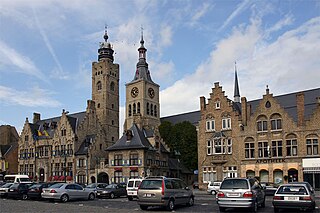 W
WThe Capitulation of Diksmuide, or Dixmuide, then in the Spanish Netherlands, took place from 26 to 28 July 1695, during the 1689 to 1697 Nine Years' War. An Allied garrison of around 4,000 men surrendered to a superior French force.
 W
WThe siege of Dorsten was a military conflict that lasted from 16 July 1641 to 19 September 1641 during the Thirty Years' War in Europe. The opposing sides were the Landgraviate of Hesse-Cassel and the Holy Roman Empire of the German Nation.
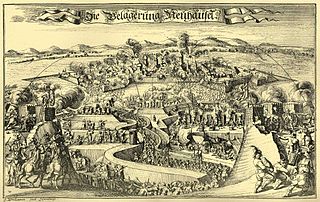 W
WThe siege of Érsekújvár was fought between July 7 and August 17 of 1685, between the besieging Habsburg army and the Ottoman garrison of Érsekújvár, city in what is today Nové Zámky, Slovakia . The Austrian commander, Aeneas de Caprara, invested the city and stormed it on August 17, slaying the entire Ottoman garrison.
 W
WThe siege of Érsekújvár also known as the siege of Neuhäusel occurred in 1663 when Grand Vizier Fazil Ahmed Pasha leading the Ottoman Turks invaded Habsburg Hungary and captured the Hungarian fortress at Érsekújvár.
 W
WThe Siege of Florence took place from 24 October 1529 to 10 August 1530, at the end of the War of the League of Cognac. At the Congress of Bologna, the Medici Pope Clement VII and Emperor Charles V agreed to restore the Medici in Florence. A large Imperial and Spanish army under Philibert of Châlon, Prince of Orange and Pier Maria III de' Rossi surrounded the city, and, after a siege of nearly ten months, captured it, overthrowing the Republic of Florence and installing Alessandro de' Medici as the ruler of the city.
 W
WThe Siege of Głogów or Defense of Głogów was fought on 24 August 1109 at the Silesian town of Głogów, between the Kingdom of Poland and the Holy Roman Empire. Recorded by the medieval chronicler Gallus Anonymus, it is one of the most well known battles in Polish history. The Polish forces were led by Duke Bolesław III Wrymouth, while the Imperial forces were under the command of King Henry V of Germany. Bolesław was victorious.
 W
WThe siege of Godesberg, 18 November – 17 December 1583, was the first major siege of the Cologne War (1583–1589). Seeking to wrest control of an important fortification, Bavarian and mercenary soldiers surrounded the Godesberg, and the village then of the same name, now Bad Godesberg, located at its foot. On top of the mountain sat a formidable fortress, similarly named Godesburg, built in the early 13th century during a contest over the election of two competing archbishops.
 W
WThe Siege of Groningen was a battle that took place in 1672 during the Franco-Dutch war. It was a Dutch victory that ended all hope of the Bishop of Münster to push deeper into the Netherlands. The Münster army was so weakened by the defeat that the Dutch army successfully reconquered much of the land that Münster had conquered just weeks earlier. Every year, the city of Groningen celebrates its victory as a local holiday on 28 August.
 W
WThe Siege of Haguenau was a siege of the War of the Spanish Succession. An Imperial army under the command of Field Marshal Johann Karl von Thüngen, besieged and captured the French fortified city of Haguenau on the banks of the Rhine river in Alsace.
 W
WThe siege of Heidelberg or the Imperial-Spanish capture of Heildelberg took place from 23 July to 19 September 1622, at Heidelberg, Electorate of the Palatinate, between the Imperial-Spanish army led by Johan Tzerclaes, Count of Tilly and Don Gonzalo Fernández de Córdoba against the Anglo-Protestant forces of Frederick V, Elector Palatine, commanded by Sir Gerard Herbert and Sir Horace Vere during the Palatinate campaign, in the context of the Thirty Years' War. On 16 September the city of Heidelberg was taken by storm, and the Heidelberg Castle surrendered three days later to the Imperial and Spanish forces.
 W
WThe Siege of Hof was an event of the Second Margrave War. The city of Hof was successfully besieged in 1553 by the opponents of the Margrave Albert II Alcibiades of Brandenburg-Kulmbach.
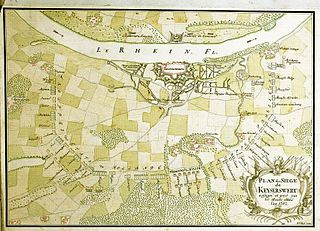 W
WThe Siege of Kaiserswerth, was a siege of the War of the Spanish Succession. Prussian and Dutch troops numbering 38,000 men and 215 artillery pieces and mortars under the command of Imperial Field Marshal Walrad, Prince of Nassau-Usingen, besieged and captured the small French fortress on the Lower Rhine, which the French had occupied without resistance the previous year. The Dutch regarded the capture of this fortification as more important than an advance into the French-held Spanish Netherlands.
 W
WThe Siege of Landau saw an army from the Holy Roman Empire led by Louis William, Margrave of Baden-Baden lay siege to the fortress city of Landau which was held for the Kingdom of France. The French defenders led by Ezéchiel du Mas, Comte de Mélac resisted vigorously but were forced to surrender after a three-month leaguer. This action of the War of the Spanish Succession occurred at Landau in the state of Rhineland-Palatinate, Germany, located 49 kilometres (30 mi) southwest of Mannheim.
 W
WThe Sack of Magdeburg, also called Magdeburg's Wedding or Magdeburg's Sacrifice, was the destruction of the Protestant city of Magdeburg on 20 May 1631 by the Imperial Army and the forces of the Catholic League, resulting in the deaths of around 20,000, including both defenders and non-combatants. The event is considered the worst massacre of the Thirty Years' War. Magdeburg, then one of the largest cities in Germany, having well over 25,000 inhabitants in 1630, did not recover its importance until well into the 18th century.
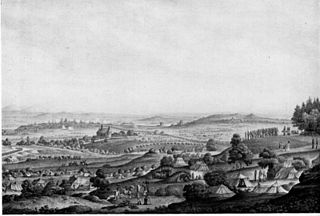 W
WThe siege of Mainz was a short engagement at the beginning of the War of the First Coalition. The victorious French army of Custine seized the town on October 21, 1792, after three days of siege. The French occupied Mainz, and tried to install the Republic of Mainz there.
 W
WIn the siege of Mainz, from 14 April to 23 July 1793, a coalition of Prussia, Austria, and other German states led by the Holy Roman Empire besieged and captured Mainz from revolutionary French forces. The allies, especially the Prussians, first tried negotiations, but this failed, and the bombardment of the city began on the night of 17 June.
 W
WThe Siege of Metz during the Italian War of 1551–59 lasted from October 1552 to January (1-5), 1553.
 W
WThe Siege of Mons, 15 March–10 April 1691, was a major operation fought during the Nine Years' War, and was the main French objective for the 1691 campaign in the Spanish Netherlands. The city was besieged and captured before the normal commencement of the campaigning season with minimal losses. The outcome was not in doubt, but in a conflict dominated by siege warfare, neither the French army of King Louis XIV, nor the forces of the Grand Alliance under King William III, could bring about a decisive battle. After the siege the duc de Boufflers bombarded the neutral city of Liège, whilst the duc de Luxembourg captured Halle, and scored a minor victory against the Prince of Waldeck at the Battle of Leuze in September. Strategically, however, little had changed in the war, and both combatants returned to winter quarters at the end of the campaigning season.
 W
WThe 1695 Siege of Namur or Second Siege of Namur took place during the Nine Years' War between 2 July and 4 September 1695. Its capture by the French in the 1692 and recapture by the Grand Alliance in 1695 are often viewed as the defining events of the war; the second siege is considered to be William III's most significant military success.
 W
WThe Siege of Naples was a siege of the Italian city of Naples in 1528 during the War of the League of Cognac.
 W
WThe siege of Nice occurred in 1543 and was part of the Italian War of 1542–46 in which Francis I and Suleiman the Magnificent collaborated as part of the Franco-Ottoman alliance against the Holy Roman Emperor Charles V, and Henry VIII of England. At that time, Nice was under the control of Charles III, Duke of Savoy, an ally of Charles V. This is part of the 1543–1544 Mediterranean campaign of Barbarossa.
 W
WThe Siege of Niemcza took place during three weeks in August 1017, in the last phase of the German–Polish War (1002–18), when the forces of the Emperor Henry II besieged the town of Niemcza controlled by the Polish ruler Bolesław I the Brave. Despite the aid of Bohemian and Lutici allies, the Imperial attack was ultimately unsuccessful, according to medieval chronicler Thietmar of Merseburg due to the arrival of reinforcements which managed to break into the city and the illness among the German forces. The failure of the siege marked the end of Henry's campaign in Poland and led the emperor to agree to the Peace of Bautzen in 1018, which left the eastern March of Lusatia and the Milceni lands under Polish control.
 W
WThe Siege of Philippsburg was a siege of the fortress of Philippsburg during the War of the League of Augsburg. It occurred between 27 September and 30 October 1688 and ended in a French victory over the Imperial garrison.
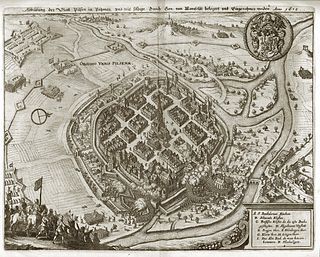 W
WThe siege of Pilsen or Battle of Pilsen was a siege of the fortified city of Pilsen in Bohemia carried out by the forces of the Bohemian Protestants led by Ernst von Mansfeld. It was the first major battle of the Thirty Years' War. The Protestant victory and subsequent capture of the city enlarged the Bohemian Revolt.
 W
WThe Siege of Pilsen lasted from 14 July 1433 to 9 May 1434 and was an important encounter of the Hussite Wars. Hussite troops led by Prokop the Great had unsuccessfully besieged the Catholic city of Pilsen for nine months and twenty three days. Failure to capture one of the last major Catholic cities in Bohemia along with the fall of New Town was a huge blow for the Hussite groups that foreshadowed their decisive defeat in the Battle of Lipany.
 W
WThe Rhine campaign (1713) was a successful French campaign against the Holy Roman Empire, which refused to sign the Treaty of Utrecht. The campaign led to the signing of the Treaty of Rastatt (1714).
 W
WThe Sack of Rome, then part of the Papal States, followed the capture of the city on 6 May 1527 by the troops of Charles V, Holy Roman Emperor during the War of the League of Cognac. The largely Protestant German Landsknechts as well as Spanish soldiers and Italian mercenaries, mutinous over unpaid salaries, entered the city of Rome and immediately began looting, slaying and holding citizens for ransom. The sack debilitated the League of Cognac, an alliance formed by France, Milan, Venice, Florence and the Papacy against Charles V. Pope Clement VII took refuge in Castel Sant'Angelo after the Swiss Guard were annihilated in a delaying rearguard action, where he remained until a ransom was paid to the pillagers. By February 1528 lack of food and an outbreak of plague led to the armies abandoning the city, whose population had dropped from 55,000 to 10,000. Benvenuto Cellini, eyewitness to the events, described the sack in his works.
 W
WThe Siege of Stralsund was a siege laid on Stralsund by Albrecht von Wallenstein's Imperial Army during the Thirty Years' War, from May to 4 August 1628. Stralsund was aided by Denmark and Sweden, with considerable Scottish participation. The lifting of the siege ended Wallenstein's series of victories, and contributed to his downfall. The Swedish garrison in Stralsund was the first on German soil in history. The battle marked the de facto entrance of Sweden into the war.
 W
WThe Siege of Thionville was the siege of the town of Thionville during the Italian War of 1551–59. It was held by the Spanish against a French force under Francis, Duke of Guise and others. It lasted from 17 April to 23 June 1558 and resulted in a French victory.
 W
WThe Siege of Toulon took place between 29 July to 21 August 1707 during the War of the Spanish Succession, when a combined Savoyard-Imperial army supported by a British naval force, attacked the French base at Toulon.
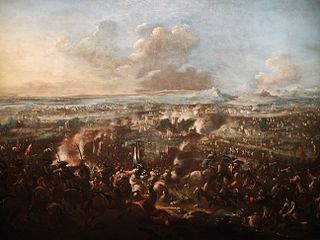 W
WThe siege of Turin took place from June to September 1706, during the War of the Spanish Succession, when a French army led by Louis de la Feuillade besieged the Savoyard capital of Turin. The campaign by Prince Eugene of Savoy that led to its relief has been called the most brilliant of the war in Italy. The siege is also famous for the death of Piedmontese hero Pietro Micca.
 W
WThe Siege of Valenciennes took place from 28 February to 17 March 1677, during the Franco-Dutch War, when Valenciennes, then in the Spanish Netherlands, was attacked by a French army under the duc de Luxembourg.
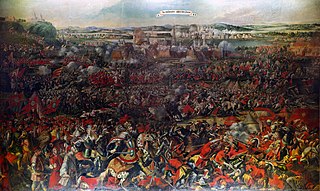 W
WThe Battle of Vienna took place at Kahlenberg Mountain near Vienna on 12 September 1683 after the imperial city had been besieged by the Ottoman Empire for two months. The battle was fought by the Holy Roman Empire led by the Habsburg Monarchy and the Polish–Lithuanian Commonwealth, both under the command of King John III Sobieski, against the Ottomans and their vassal and tributary states. The battle marked the first time the Commonwealth and the Holy Roman Empire had cooperated militarily against the Ottomans, and it is often seen as a turning point in history, after which "the Ottoman Turks ceased to be a menace to the Christian world". In the ensuing war that lasted until 1699, the Ottomans lost almost all of Hungary to the Holy Roman Emperor Leopold I.
 W
WThe siege of Vienna was a decisive siege in 1485 of the Austrian–Hungarian War. It was a consequence of the ongoing conflict between Frederick III and Matthias Corvinus. The fall of Vienna meant that it merged with Hungary from 1485 to 1490. Matthias Corvinus also moved his royal court to the newly occupied city. Vienna became for more than a decade the capital of Hungary.
 W
WThe siege of Vienna, in 1529, was the first attempt by the Ottoman Empire to capture the city of Vienna, Austria. Suleiman the Magnificent, sultan of the Ottomans, attacked the city with over 100,000 men, while the defenders, led by Niklas Graf Salm, numbered no more than 21,000. Nevertheless, Vienna was able to survive the siege, which ultimately lasted just over two weeks, from 27 September to 15 October 1529.
 W
WThe Siege of Weinsberg took place in Weinsberg, in the modern state of Baden-Württemberg, Germany, which was then part of the Holy Roman Empire. The siege was a decisive battle between two dynasties, the Welfs and the Hohenstaufen. The Welfs for the first time changed their war cry from "Kyrie Eleison" to their party cries. The Hohenstaufen used the 'Strike for Gibbelins' war cry.
 W
WThe siege of Zoutleeuw or the siege of Léau was a siege of the War of the Spanish Succession. Allied troops with 16 artillery pieces under the command of the English Captain general the Duke of Marlborough, besieged and captured the small French-held Flemish fortified town of Zoutleeuw in the Spanish Netherlands.